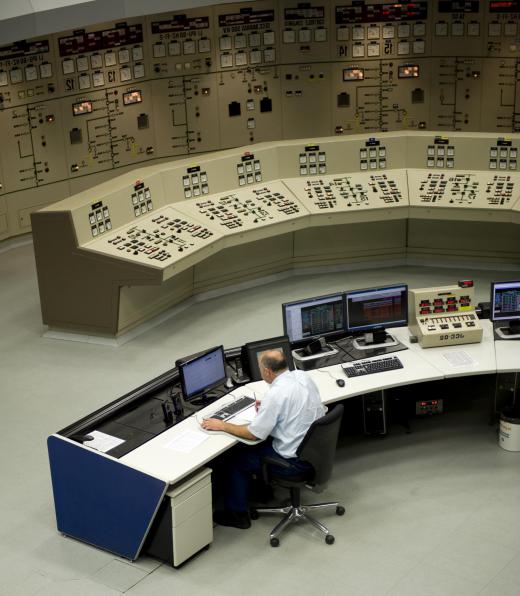Actuator controls are the mechanisms used to start, stop, and protect actuators from over-loading and over-cycling. Actuators may be controlled in two basic ways — simple manual or automated stop/start systems, or more sophisticated, multi-function servo systems. Actuators that are used to fulfill simple single function roles will typically utilize the simple stop/start type of control system. Those used to constantly produce a wide range of actuation movement in response to complex installation requirements will generally be part of a servo system. Most will, however, also include sensors which prevent the actuator from over-cycling or running if the mechanism is jammed or damaged.
A significant number of all mechanical processes include some or other type of actuator. These devices supply remote switching or activation of secondary processes where operator intervention is not practical. Although the actuator is capable of doing the work of a human operator, it must still be either manually or automatically started and stopped somehow. This is the function of actuator controls, which not only both activate and stop the device, but also protect against potential damage caused by over-cycling and overloading. These actuator controls may consist of very simple stop and start functions or of complex multi-dimensional control functionality.

In general, actuators that produce simple functions such as switching a machine function on and off will not require more than an equally simple on-and-off control system. These actuator controls may be manually operated by an operator in a control room pushing a stop or start button, or be part of an automated system. Automated controllers will typically consist of an external sensor such as a level switch that starts and stops the actuator. A good example is a refill valve on a water tank. When the level of the water drops below a set point, the level switch starts the actuator connected to the refill valve, allowing water to flow into the tank to the point where the level switch is reactivated and the valve is shut off again.
Complex systems requiring constant, real-time adjustment of system parameters require actuator controls capable of more flexible outputs. In these cases, a servo system is usually employed, which responds to the demands of the system as they occur. This is achieved by using system feedback inputs which supply the controller with real-time information regarding its status. It then assesses the information and activates the actuator to compensate for the process needs. Both the simpler and servo actuator controls will typically include sensors wired to stop the actuator from over-cycling, or operating beyond its limits, and from continuing to run if the mechanism becomes jammed or damaged.
